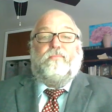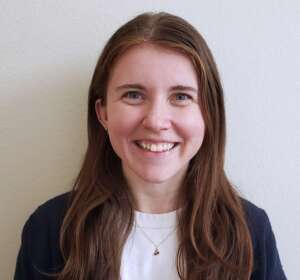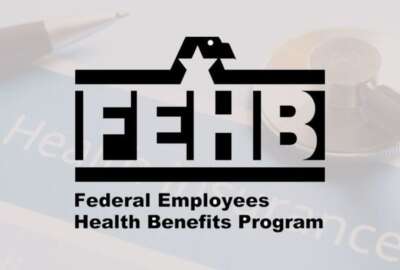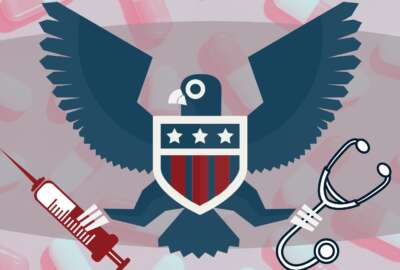Open Season Exchange 2022: OPM’s Edward DeHarde on why comparing FEHB plans is critical this year
Federal employees will pay 8.7% more on average toward health premiums. But the vast majority of FEHB enrollees don’t make changes to their elections. OPM...
Each year, the vast majority of federal employees don’t make changes to their enrollment options for the Federal Employee Health Benefits program. That even includes, at times, employees in the Office of Personnel Management, the agency that runs FEHB overall.
“I had a colleague in … OPM years ago. He called me and said, ‘When did my premium go up 50%?’ And I looked, and I said, ‘Five years ago.’ They had never looked,” said Edward DeHarde, deputy associate director for federal employees insurance operations at OPM, said during the Federal News Network Open Season Exchange 2022. “If you’re in, you’ll stay in the same plan. But it greatly behooves everyone to look, to shop and to think about making elections.”
DeHarde’s colleague exemplifies the vast majority of FEHB participants, who year after year don’t make changes — and often don’t even look — at their health care choices. In 2021, 97.5% of enrollees didn’t make any changes to their health care plans during open season. Just 0.6% switched health care providers. It’s not necessarily imperative to make a change, but it is important to take a look at your options, DeHarde said.
This year, though, things are a little bit different. DeHarde advised that it’s especially important for employees to consider their elections, as premium rates are going up at a sharper increase than what FEHB has seen in over a decade.
For 2023, FEHB participants will pay 8.7% more on average toward health care premiums. The government’s share of costs will increase by 6.6%, averaging to an overall increase of 7.2%.
Federal health benefits increase comparable to industry
Despite the steep increase, the premium rates are generally on par with larger private sector health care providers, according to OPM.
“What we’re seeing specifically in our plans is higher than expected utilization of outpatient services and facilities, increases in utilization of professional services, and increased utilization and unit cost in specialty drugs,” DeHarde said. “These are things that aren’t unique to the FEHB program market. They’re out there in the entire commercial industry.”
Compared with the average 7.2% premium rate increase for FEHB, CalPERS, which purchases health benefits for California state government employees, said its rates would increase 6.75% overall for 2023. Similarly, Aon estimates that health costs could increase by approximately 6.5% next year. And Kaiser Family Foundation individual marketplace premiums will rise roughly 10%.
DeHarde noted that even though rates are going up significantly for FEHB, dental and vision plans for federal employees and retirees in FEDVIP are mostly aligned with, if not slightly down from, last year’s average rates.
“We’ve made some good changes in these plans,” DeHarde said. “We’ve improved access to pediatric dentistry. We’ve eliminated orthodontic waiting periods. We’ve been able to hold down the dental premium increase to an extremely low amount. For vision, there’s actually a decrease in premiums on average. Again, these are averages. You want to look at your plan, see how you feel about the coverage you’re getting, and speak to your dentist.”
How to compare federal 2023 health benefits enrollment options
To look at the plan options available to participants, both for FEHB and FEDVIP, DeHarde said enrollees can use a plan comparison tool on OPM’s website. The tool is a feature that the agency intends to integrate further in the near future, to create more of a “one-stop shop” for FEHB participants, DeHarde said.
“Once it shows all that’s available to you, you can select checkboxes of the plans that you want to compare more rigorously. And then there are links to the plans that you want to compare more rigorously to all of the comprehensive information related to the plan, to the plan provider directory and information on how to reach that plan so you can discuss things with them directly,” DeHarde said.
Diving a little bit deeper in the tool will also help FEHB participants see some other options available to them, often with good outcomes.
“Let’s say, ‘I’m in this plan, and I want to consider these two or three other plans,’” DeHarde said. “Look in the plan material first. It will tell you whether your doctor is in it. But then, talk to your doctor and talk to their office staff. There is likely a scenario where you can receive the same health care coverage, or the health care coverage that you need, for less money.”
And participants should think about what they need to plan for in the coming year for their health care needs. Often, there’s a cheaper option on the table depending on one’s medical situation, DeHarde said. He described some of the types of questions participants should ask themselves when reviewing materials during open season:
- Do I just go in for an annual physical?
- Do I have a chronic health condition for which I see specialists?
- What have been my services for the past several years?
- What have my doctors told me about what I’m going to need next year?
“Once you think about that, you can look to the specific coverages in those brochures,” he said, adding, “You want to look at the cost sharing, the deductibles, the coinsurance, the catastrophic protection out-of-pocket maxes, and figure out what you think your cost is going to be versus that insurance coverage.”
Ultimately, though, DeHarde said there are almost always savings available to FEHB enrollees.
“If you’re in the most expensive plan, and you go to the least expensive plan, you could maybe save up to 50% on your premiums, depending on what local area you’re in,” he said.
Even for those who may end up staying in the same plan, it’s still worth taking a look during open season at what else is out there. “You may not have made a bad choice if you elect to stay with your current plan. But you want to look, and you want to proactively make a choice,” DeHarde said.
FSAFEDS pre-tax flexible spending program underutilized
There are other health benefits options aside from FEHB and FEDVIP too. FSAFEDS, the government’s flexible spending account program, lets federal employees put pre-tax money toward eligible health costs. But during 2022, less than 20% of eligible federal employees actually used FSAFEDS.
Active federal employees can make an allotment divided over 26 pay periods throughout the year. The government’s flexible spending program covers many over-the-counter medications, COVID-19 testing, most dental costs, eye exams, hospital fees, physical therapy and many other services and health products.
FEDVIP and FEHB both roll over into next year if participants do nothing. But enrollment in FSAFEDS does not roll over. Participants must opt in every year and specify their payroll deduction.
Only active federal employees can use FSAFEDS, and there are a couple additional restrictions as well. For example, the program may not be available to those who have high-deductible health plans with a health savings account. But there is another FSA-type option for those not eligible for the full FSAFEDS program, DeHarde said.
“We also have a limited-expense FSA to try to make something available to virtually everyone who receives salary and could benefit from the program,” he said. “Even if you go to look and you find that you’re excluded through one of these things, look at the limited-expense FSA too, and there’s probably something there for you.”
New and expanded FEHB coverage for 2023
This year, OPM added a host of new and expanded coverage areas, notably including more maternal health coverage for both prenatal and postnatal care. OPM also encourages carriers to offer more options for assisted reproductive technology.
“We’ve improved access to gender-affirming care and services for transgender and gender-diverse individuals. And we’ve made the language of all of our plan materials such that it promotes gender equity,” DeHarde said.
There are also expanded telehealth options, something that’s not new to FEHB but telehealth accelerated throughout the COVID-19 pandemic.
“We’ve been asking carriers to focus on that for several years,” DeHarde said. “The pandemic had one positive outcome in that it promoted telehealth, largely because it had to happen. Organically, telehealth really expanded its usage, and much of that was positive. We are continuing to ask the carriers to focus on that. … We’re talking about hybrid work now, and taking some of the improvements that we’ve learned in terms of remote work versus in-office [work]. And for medical care, there are similar dynamics occurring, where in many instances telehealth can be assistive in potentially producing better health outcomes.”
What happens with FEHB outside of open season?
Open season is the biggest time of year for FEHB participants to pay attention to their health care enrollment options, but OPM works year-round and daily with health insurance carriers behind the scenes. OPM first establishes the health benefits that will be available under FEHB, then works with carriers to set rates. The law requires that FEHB premiums be a reasonable reflection of the cost of benefits provided.
“There’s not a lot of slack in this premium,” DeHarde said. “You’re paying for the benefits provided, a very small amount for administrative costs and a profit that is limited to, in general, less than 1% of projected claims and administration. That is established prior to the material that appears on the website that creates the open season that then allows everyone to make a choice.”
With 271 plan options for FEHB and tons of benefits to review, being proactive and avoiding procrastination are crucial for federal employees and retirees during open season.
“Don’t just let it happen to you,” DeHarde said. “Get out on the website, shop, and shop early. Too many people wait until the very last day of open season to try to make the choice. You don’t want to do that. You want to get in there early, you want to feel good about your choice, and you can get an arrangement where you can save money.”
Check out all the sessions from the Federal News Network Open Season Exchange 2022.
Federal open season 2023 by the numbers
8.7% average premium rate increase for cost to participants
6.6% average premium rate increase for cost to the government
7.2% average premium rate increase overall
271 plan options in FEHB
18 fee-for-service plans
37 high-deductible health plans
188 health maintenance organization (HMO) plans
0.21% overall average increase for dental plans
0.41% overall average decrease for vision plans
SOURCE: Office of Personnel Management
Copyright © 2024 Federal News Network. All rights reserved. This website is not intended for users located within the European Economic Area.
Related Stories
Featured speakers
-

Edward DeHarde
Deputy Associate Director, Federal Employees Insurance Operations, Office of Personnel Management
-

Drew Friedman
Reporter, Federal News Network
Upcoming Events
Related Stories
Top Stories

Edward DeHarde
Deputy Associate Director, Federal Employees Insurance Operations, Office of Personnel Management

Drew Friedman
Reporter, Federal News Network






